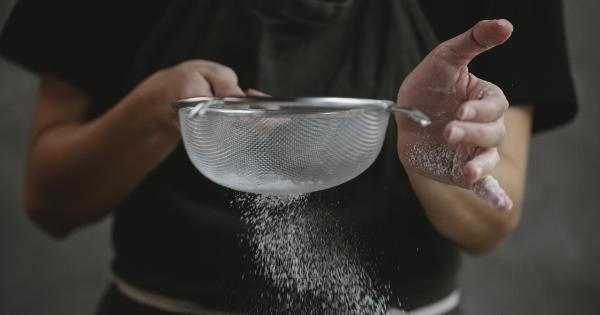Dermatitis is an inflammatory skin condition that can cause redness, itchiness, and flaking. It can be caused by a variety of factors, including allergies, irritants, and genetic predisposition.
One common trigger for dermatitis is exposure to certain ingredients in soap. In this article, we’ll take a closer look at which specific ingredients in soap can trigger dermatitis.
1. Fragrances
Fragrances are a common cause of dermatitis, and are found in many personal care products, including soaps. Fragrances can be made up of dozens or even hundreds of different chemicals, some of which are known irritants.
When you use a soap containing fragrance, these chemicals can come into contact with your skin and cause an allergic or irritant reaction.
2. Preservatives
Preservatives are added to soap to prevent bacterial and fungal growth, and can be found in both natural and synthetic forms. While preservatives can be useful in preventing infections, some people can have an allergic reaction to them.
Common preservatives in soap include parabens, methylisothiazolinone, and formaldehyde releasers.
3. Surfactants
Surfactants are a type of detergent that are added to soap to help it lather and clean more effectively. Some surfactants, such as sodium lauryl sulfate (SLS) and sodium laureth sulfate (SLES), can be harsh on the skin and strip away natural oils.
This can lead to dryness, irritation, and even dermatitis in some people.
4. Dyes and pigments
Dyes and pigments are added to soap to give it color. While they may look pretty, they can also be a potential trigger for dermatitis. Some people may have an allergic reaction to certain dyes and pigments, causing redness, swelling, and itchy skin.
5. Essential oils
Essential oils are often added to soap for their pleasant aroma and natural healing properties. However, some essential oils can be highly sensitizing, causing an allergic or irritant reaction in some people.
Common essential oils that can trigger dermatitis include tea tree oil, peppermint oil, and lavender oil.
6. Alcohols
Alcohols are often used in soap as solvents and emulsifiers. However, some types of alcohol, such as denatured alcohol, can be very drying to the skin and cause irritation and dermatitis.
Other alcohols, such as cetearyl alcohol, are less drying and can actually help to moisturize the skin.
7. Antimicrobial agents
Antimicrobial agents, such as triclosan and benzalkonium chloride, are added to soap to kill bacteria and prevent infections. However, these agents can also be harsh on the skin and cause irritation, especially with prolonged use.
In addition, some antimicrobial agents have been linked to antibiotic resistance and environmental concerns, making them a controversial ingredient for soap.
8. Emollients and moisturizers
Emollients and moisturizers are added to soap to help it hydrate and soothe the skin. While these ingredients can be helpful for people with dry or sensitive skin, they can also be a potential trigger for dermatitis.
Some common moisturizing ingredients in soap include glycerin, shea butter, and jojoba oil.
9. Natural ingredients
While many natural ingredients can be beneficial for the skin, some can also be highly sensitizing and trigger dermatitis.
Common natural ingredients in soap that can cause an allergic or irritant reaction include coconut oil, soy, oatmeal, and aloe vera.
10. Synthetic ingredients
Synthetic ingredients are often added to soap to improve its texture, scent, or shelf-life. While many synthetic ingredients are considered safe for use, some can also be a potential trigger for dermatitis.
Common synthetic ingredients in soap include propylene glycol, artificial coloring, and phthalates.
Conclusion
While there are many potential ingredients in soap that can trigger dermatitis, the good news is that there are also plenty of soap options available that are free of these irritants.
If you are prone to dermatitis, it is important to read labels carefully and choose soap that is gentle and non-irritating.




























